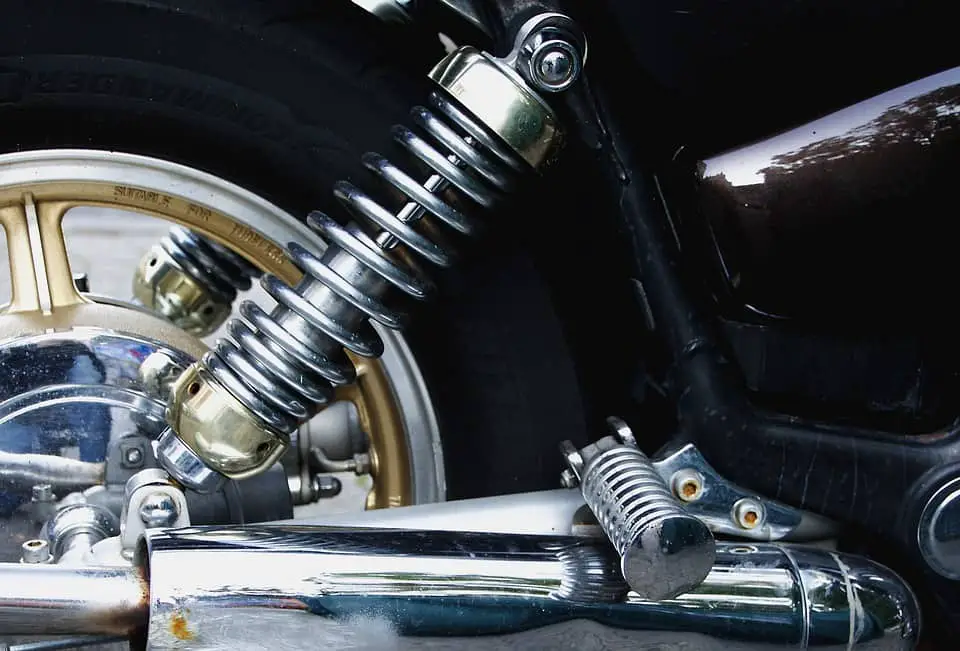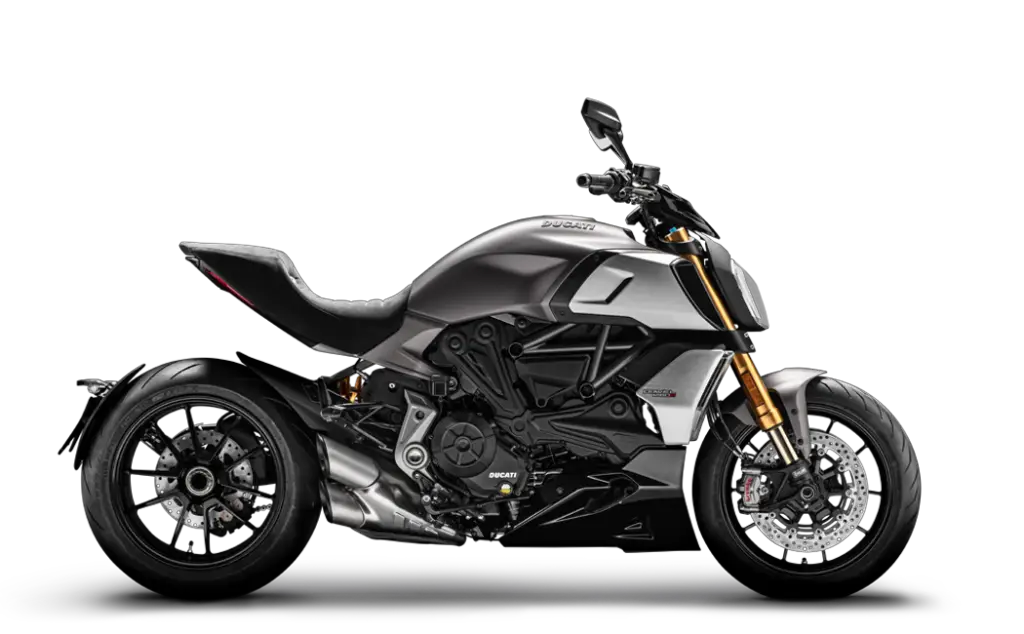Are you shorter than average and do you love riding motorcycles? In that case, you probably know that being short can be a bit of a struggle when riding your motorcycle.
Especially higher bikes like the BMW GS can be hard to control. Fortunately, there are some tips and tricks to make it easier to handle your motorcycle. Some are pretty straight forward, whiles others might be new to you. So let’s see if these tips help you to become a better rider! This is a list of 11 tips for shorter riders, controlling their motorcycle.
Tip #1: Install panniers
My first tip is to add panniers to your bike. This might sound weird to you since they add extra weight to your motorcycle. Loads of riders see extra weight as a bad thing, whiles it can actually help you to reach the ground more easily.
The weight of the panniers will lower the bike just a little. Your suspension will have to take the weight of the panniers, which can be just enough to reach the ground easily. It won’t make a huge difference but can be enough for those that can touch the ground with their toes but would like to touch the ground with the balls of their feet.
Tip #2: Lower your bike’s suspension
In addition to this, you can lower your bike’s suspension. You can eighter do this yourself, or ask the dealer to do it for you. Lowering your bike’s suspension can lower the bike with up to 1 inch.
There are some downsides to this since this will also affect your motorcycle’s handling. Your motorcycle will feel a little bit stiffer and you’ll feel bumps and holes in the road just a little better.
Reason for this is the fact that the spring and the shock absorber are tighter, making them less shock absorbing.

Tip #3: Height increasing motorcycle boots
One of the most common tricks is using height increasing motorcycle boots. These boots will add about an inch to your body length, making it easier to reach for the floor. It’s such a common thing, that I wrote a complete article about height increasing motorcycle boots.
Most riders make the mistake of buying the wrong height increasing motorcycle boots. Please read this carefully, because this can save you hundreds of dollars.
There are two types of height increasing boots. The first type has a thick sole all over, adding extra height to the boot. The second one has height increasing heel and toe, but leaves a gap under the ball of your foot.
It’s important to go for the second type of boot, since this will minimalize the effect on shifting and breaking with these special height increasing boots.
A boot with a thick sole all over will become much higher overall, making it almost impossible to get your toes under the shifter. Shifting up will be dramatically different from the boots you are using right now. You’ll have to keep your feet in a weird position in order to shift and break.
Just observe the images I made below, and make sure your height increasing boots have some space left for the foot peg. I would advise you to try the boot on, on your motorcycle, when possible. It’s a matter of feeling if the boot will do its job.
Avoid a thick sole like this This sole will be best for shifting gears
Tip #4: Don’t stop anywhere
This tip isn’t about fancy products or bike adjustments to make yourself more stable on the bike. No, this tip actually asks you for some skill.
Being able to touch the ground with the tip of your toes is uncomfortable, but it doesn’t make it impossible to ride a bike.
However, what if you stop in a place where the ground is just a little bit lower than usual? That might cause a huge problem, since you won’t be able to touch the ground at all.
That’s why you should always be aware of where you stop. You shouldn’t stop in places that make it impossible to reach the ground, like:
- Above a manhole cover
- On the foot of a hill
- Next to a curb (on the higher side)
Teach yourself to always check where you stop. Avoiding manhole covers are smart for any rider, since they might be loose or slippery, but they are extra dangerous for shorter riders.
Tip #5: Plan your stop before stopping
This might seem similar to the previous tip, but it is something different. It’s important to plan your stop before you actually stop. This means that you should know what you are going to do next, before doing it.
Make sure you shift your bike into first gear and you know which foot you are going to put down. This will avoid awkward situations where you want to drive off, only to find out that your bike is still in neutral. Putting it into gear can be a challenge when standing stationary, and you’ll draw all the attention to you.
Just plan your stop and know what you do before you make the stop. Personally, I shift down into first gear and I put my right foot on the ground while keeping my bike stationary with my front brake.
Tip #6: Choose a smaller bike
This tip might seem quite obvious, but it’s something to look into! There are loads of different types of bikes. You should look into bikes that fit your body length.
Does this make you think of a small 125cc motorcycle that people can confuse with a toy? Well, think again! There are loads of badass motorcycles that will fit short people.
My personal favorite is the Ducati Diavel. Oh man, isn’t she a beauty?!
Some motorcycles to consider are:
- Kawasaki Ninja 400 – Seat height of 31.9 inches
- Yamaha MT 07 – Seat height of 31.7 inches (very common bike)
- Honda CB300R – Seat height of 31.5 inches
- Ducati Scrambler – Seat height of 31.1 inches
- Moto Guzzi V7 – Seat height of 30.3 inches
- Ducati Diavel – Seat height of 30.3 inches
- Triumph Tiger 800 XRx LRH – Seat height of 29.9 inches
- Triumph Street Twin – 29.5 inches

Tip #7: Install a lower seat
Are the motorcycles above not your pick, or do you already own a bike? In that case, you might look into lower seats.
Some bikes will allow you to assemble a lower seat. It’s not a common thing, but I’ve heard of this more than once before.
You simply remove the original seat and replace it for a lower version. Your level of comfort might decrease a little, but at least you’re able to touch the ground properly.
Combining this with the lower suspension and height increasing boots can make a difference of a couple of inches for you. It can be the difference between being able to ride that huge bike, or not.
Oh and by the way; make sure you adjust your mirrors to your length. Are you mirrors up too high? You might want to add some bar end mirrors to your motorcycle. I wrote a complete guide on bar end mirrors that you can check out.
Tip #8: Ride with a passenger
Riding with a passenger has the same benefits as adding panniers to your motorcycle. The difference is that the passenger is heavier, whiles the panniers are more permanent.
Is this the first time riding with a passenger? I would advise you to start with a passenger that has been on the back of a motorcycle before. Or even better, a passenger that rides a bike himself/herself.
They know what to do in corners and they won’t get your motorcycle out of balance. An outbalanced motorcycle is hard to deal with, especially when you are short.
Tip #9: Look into weight distribution
Wight distribution is a huge thing! Do you have panniers on your bike? Make sure you even the weight out over both sides!
Stuff like reserve oil and a chain can be quite heavy. Putting all these heavy items in one pannier, whiles filling the other pannier with a raincoat can unbalance your bike dramatically.
Make sure that you know what you are taking with you, and try to even the weight on both sides. It’s not about the volume of items, but about the weight.
Tip #10: Ride a lightweight bike
Heavy items like a passenger or panniers can lower your bike quite a bit. But it’s harder to keep a heavy bike up than it is to keep a lightweight bike up.
That’s why the weight of the bike is one of the things to look into when buying your first motorcycle. Urban and naked bikes tend to be pretty light, where touring motorcycles can be much heavier.
Do you want to know the average weight of motorcycles by type? Check my article: ‘How much do motorcycles weigh’.
Tip #11: Add crash pads, just in case
Last but not least, you might consider adding some crash pads to your motorcycle. They will protect your bike in case it does drop.
This prevents any severe dents or scratches. I have crash pads installed myself, and it makes me feel just that little bit extra secure.


